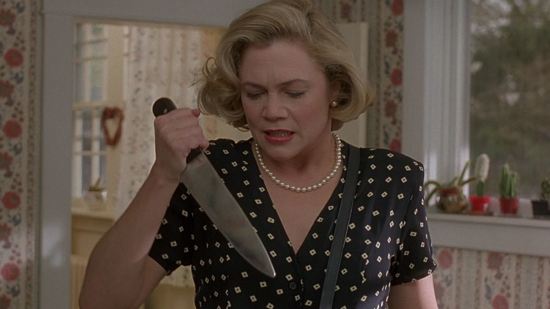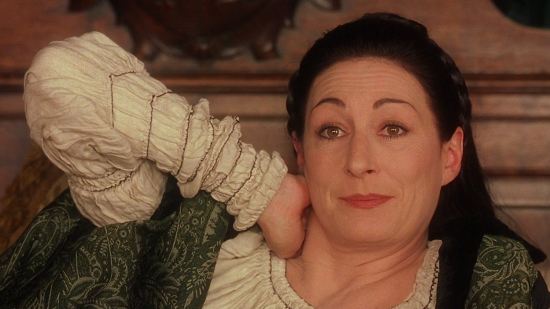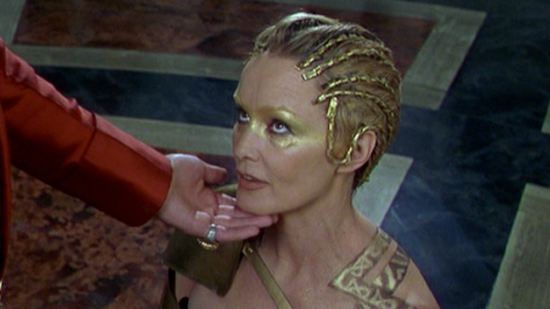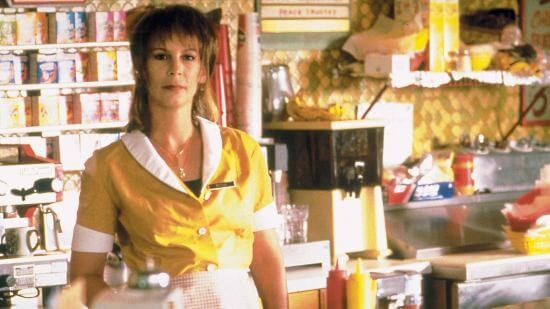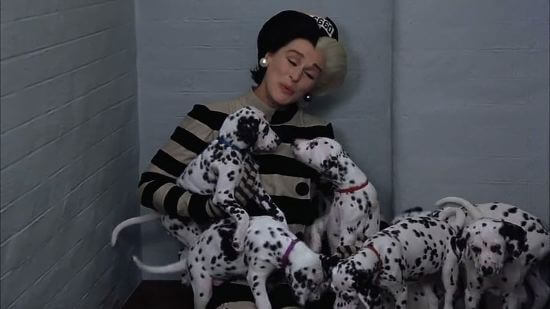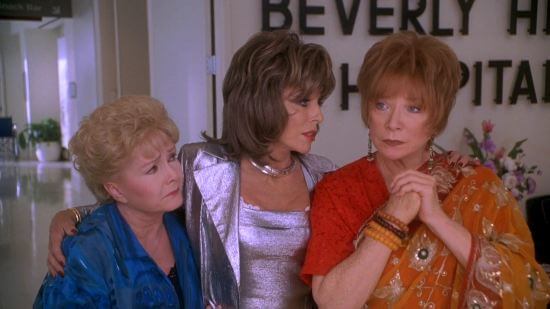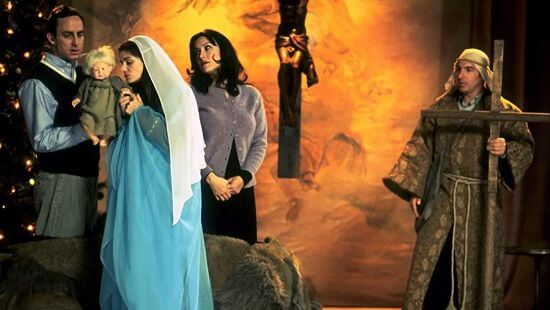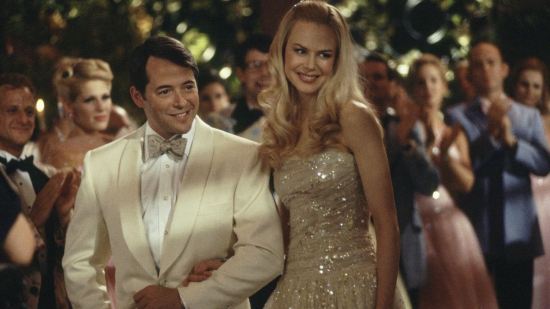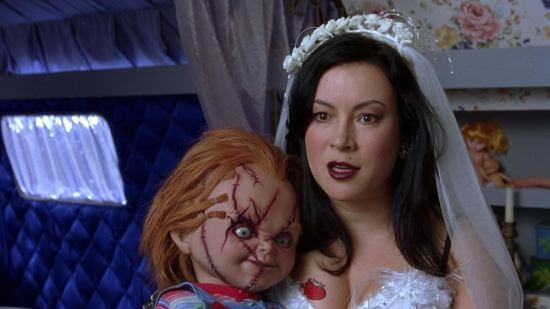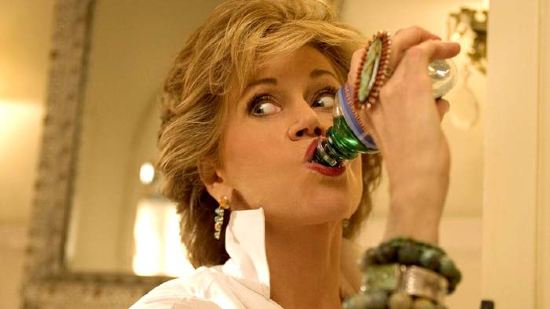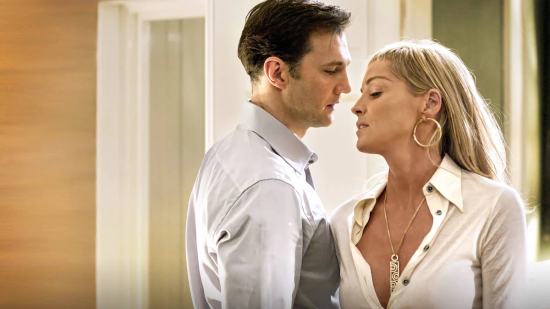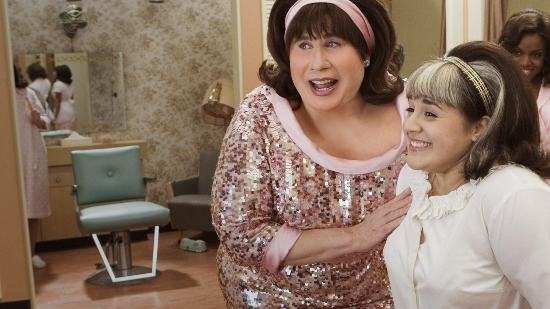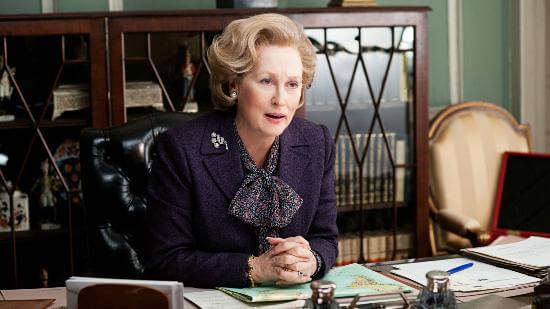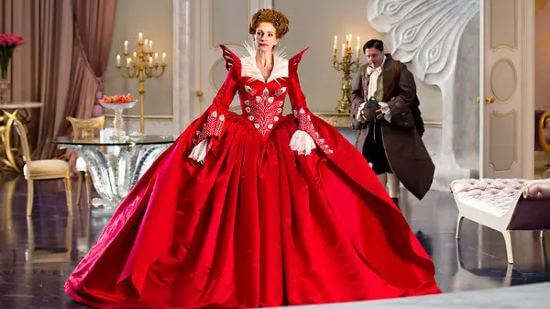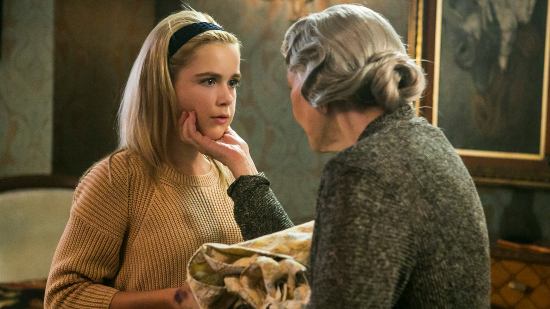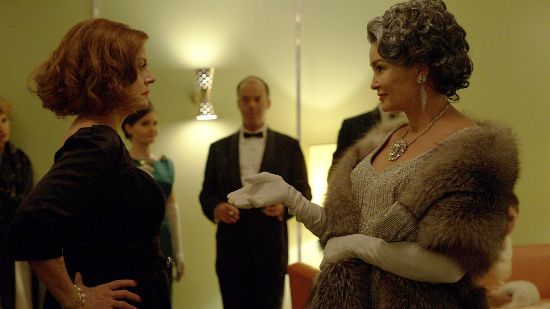Wrinkling the Grande Dame Guignol: A Complex, Macabre History
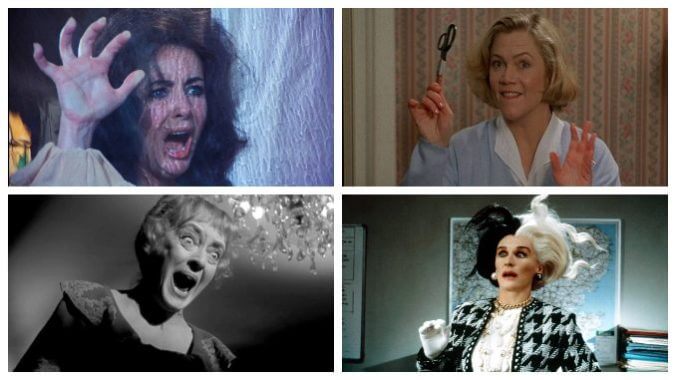
If you were horny for a little sensationalism at the turn of the 20th century, you could always go to the Grand Guignol. Tucked away in a Paris alcove, this infamous theater of the macabre would put on grotesque melodramas, erotic exhibitions and gory phantasmagorias that often caused audiences to orgasm, vomit or both.
Oscar Méténier named his theater after the classic puppet Guignol. The name winks at the topsy-turvy contents inside and the invisible hands and strings that manipulate the productions. Appearing alongside other famous characters, Punch and Judy, Guignol was known for his witty social satire. The Grande Dame Guignol tradition gets its name from this pleasure production house, but all too often, she’s caged in by definitions about what she does or what happens to her. Critic Peter Shelley nearly frees the Grande Dame Guignol from the hagsploitation and “psycho-biddy” subgenres of horror by adding that these films must include an older woman with the airs of a great lady. Shelley implicitly notices that “Grande Dame” has crucial performance elements in its tradition, but still focuses on the actions and tropes of the Guignol to define her.
Shelley and others take “Guignol” to refer to the sensationalist elements in the Le Théâtre du Grand Guignol, but they only unearth the possibility of a body buried underneath the roses. If we dig further, we might find the skeleton of something more than a narrative genre.
Here are some of the films that, chronologically, helped defined what the Grande Dame Guignol tradition has become:
What Ever Happened To Baby Jane? (1963)
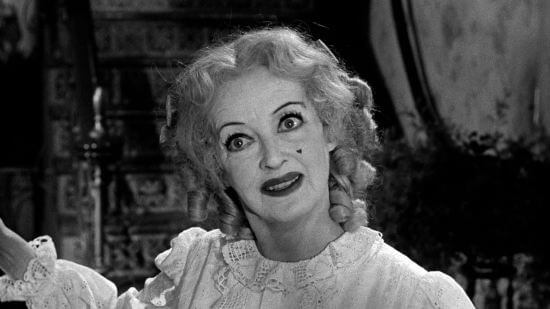
Celebrating its 60th anniversary this month, What Ever Happened To Baby Jane? is widely considered the foundation of the Grande Dame Guignol, hagsploitation and psycho-biddy genres. And while it serves up delicious macabre elements on a silver din-din platter, it also introduces a critical beauty mark on the face of the Grande Dame that is all too often overlooked.
The terror begins with a television. The jealous rivalry between sisters Jane (Bette Davis) and Blanche Hudson (Joan Crawford) intensifies because Blanche’s old films are airing for the first time. Jane can’t stand to see the revival of public love for her older sister, so she hatches a plan to revive her glory days as the vaudeville child star “Baby Jane” Hudson. Hey, what ever happened to her?
It’s a grossly wicked picture. Jane’s descent into derangement is frightening, compelling and tragic. And Blanche, poor Blanche, who’s still in that chair, is isolated and trapped, helpless to endure Jane’s retaliatory torture. Though there have been decades of debate about who is the stronger performer, I refuse to choose. What Ever Happened To Baby Jane? is the reemergence and matching of two different but equally brilliant Classic Hollywood talents.
This is a crucial element of the Grande Dame Guignol. You can’t be a Grande Dame if no one knows who you are. The audience is a vital player in the Grande Dame Guignol tradition. What makes Baby Jane so dizzying is that Blanche, Jane, Bette and Joan are all reappearing before audiences for the first time. They all want to recapture that taste of public adoration. No matter how convincing the elegance and grandeur an actress may play to the audience, a Grande Dame brings hers with her. The title is an investment of labor and history. She has earned it by giving performances of great heights. She maintains a benevolent sense of glamor when she’s amongst the public.
And we have loved watching her be grande. She earns her title from us (with some help from studio prodding). We have shared our time with her, invited her into the dark rooms of our lives, and she illuminated them. When we watch What Ever Happened To Baby Jane?, as with all Grande Dame Guignol, we are watching Hollywood history change a reel.
Hush…Hush, Sweet Charlotte (1964)
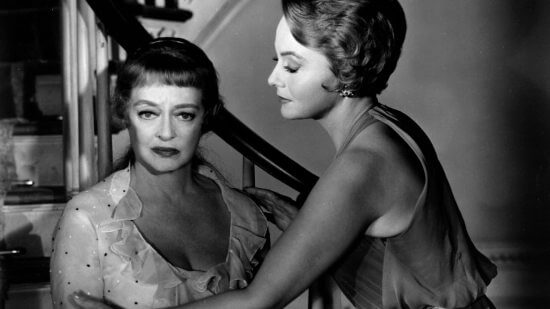
Now that we’ve curtsied before the Grande Dame as an acclaimed Hollywood actress with an established adoring public, we can pair her with Guignol. I propose we consider the term as a theatrical mode—it is the name of a puppet and a theater, after all.
There’s still plenty of grotesquery and gore. Director Robert Aldrich and Davis’ next collaboration, Hush…Hush, Sweet Charlotte, almost doubled the number of classical Guignol moments from Baby Jane. It’s a macabre plot about a wilting Southern flower manipulated by those closest to her. Like any good Guignol film, there’s a ripe amount of blood, fake heads and women screaming in bed gowns.
Here again, we are watching more than a nuanced Southern Gothic picture. We are witnessing Olivia de Havilland make her first glorious turn outside her usual character and costume dramas. Switching the power dynamic from Baby Jane, Davis is the gentle victim of de Havilland’s wickedness. Her character, Miriam Deering, is razor sharp to the spine, as formidable as her helmet of hair. When she drops the final curtain, and we can see Miriam for who she is, de Havilland embodies Guignol in a more profound sense of the word.
We can see an actress making choices and scaling the heights these films so often require. Her character is about pulling the strings, luring and trapping those in her way. But more than that, it’s a fantastic example of an actress showing a range that executives stifled during her heyday with the studio system. The actress becomes a Grand Guignol theater when she achieves these registers. She invites us in and, through a series of acting mechanisms, traps us. We’re terrified with awe at the extremes we’re seeing and the new horizons of genre into which our cherished star has wandered.
These films or characters are more than celebrities doing horror when the bills are low. Yes, they’re older women because Hollywood—society in general—finds older women repulsive and exploits that for entertainment. But that’s hagsploitation. The Grande Dame Guignol brings history. In many cases, critics say their performance represents a “fall” from a once proud height. Others will be shocked that an actress from “classic,” institutionally recognized films would be “brought low” to popular genres or mediums. If the Grande Dame Guignol is watching Hollywood history change a reel, we’re slightly mortified by the intermission.
The Madwoman of Chaillot (1969)
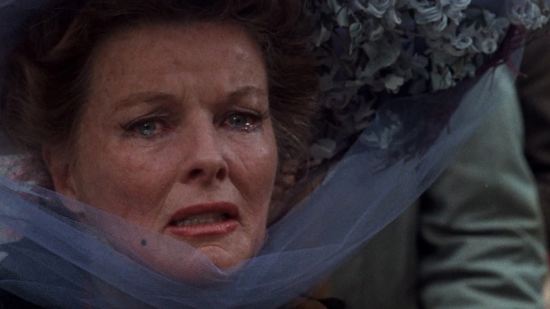
We know the Grande Dame Guignol is a mode because it moves and is sometimes only embodied by one person. In this regal oddball film about Countess Aurelia, an eccentric lady who stumbles upon a conspiracy to extract oil from underneath Paris, Katherine Hepburn is the woman out-of-joint with time. You can tell we’re in Guignol territory because most of the men around Hepburn focus on how of a different time she is, how shocking and garish her Edwardian clothes are. The men underestimate her and her friends because of their age—to their detriment. And mon Dieu, does Hepburn show us all the guts and glory of aging with boldness. At her most poignant, Aurelia is a screaming whistle that the bridge is out in the future ahead. She portends impending doom. In The Madwoman of Chaillot, she can stop the train for a time. But in the end, the parade will start again, and the Grande Dame will fade teary-eyed into history and legend.
Whoever Slew Auntie Roo? (1972)

The Grande Dame, as a figure of the past, stands as the last outpost before the future. She also reminds us of pre-modern history. In this retelling of the Hansel & Gretel story, the formidable Shelley Winters plays Mrs. Forrest, a destitute American of questionable age living in England, hosting a Christmas feast for local orphans. When one of the orphans reminds her of her dead daughter, Mrs. Forrest lays a trail to trap her forever. In camp capes and panto costume, Winters sails away in this role, starting airy and light, only tinged with darkness and finishing the picture as wretched and dark.
Many Grande Dame Guignol films have folkloric elements. Several, including a few on this list, base their characters or plots on fairy tales. Others will frequently center around holidays or rituals. And many, like Whoever Slew Auntie Roo?, will use motifs from children’s songs, lullabies and playground chants. Children are creepy!
Whoever Slew Auntie Roo? also brings an extra dish to pass, a reminder that the Grande Dame is like a repertory actress or opera singer, part of a troupe of people who reappear repeatedly. While many remember Bette Davis and Joan Crawford for their later careers in the genre, Shelley Winters deserves to be on the same mantle. We will meet her again later and see a new side of this grounded and expansive actress.
Night Watch (1973)
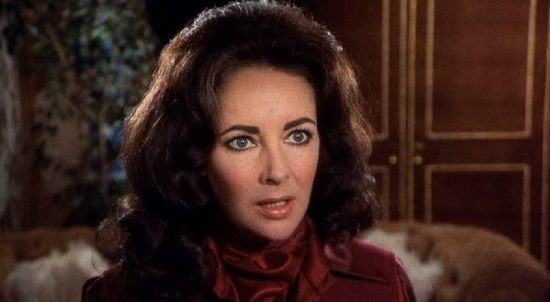
By the early 1970s, the Grande Dame Guignol was becoming aware of herself. It was also time for postwar and ‘50s starlets to join the cast. And the most glamourous among them was Elizabeth Taylor. After struggles with her health, addiction, marriage and inability to work efficiently, Taylor appears in Night Watch as Ellen Wheeler, a woman everyone treats like a child. Ellen swears she saw a dead body in the abandoned house across the street. People call her a difficult and delusional harpy. The press had been saying the same about Taylor for over a decade. In Night Watch, Taylor plays into this ethos, displaying her talent for acting like a raw nerve before springing her twist and lashing out in furious and fabulous aggression.
Identikit (1974)
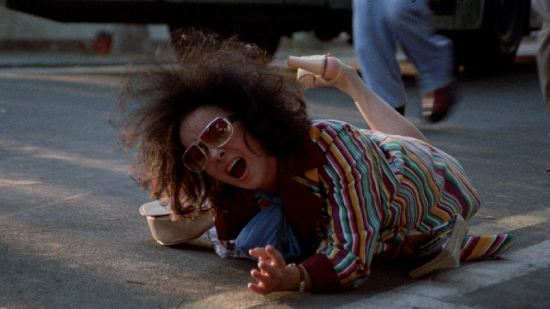
While she played to the persona public gossip had made of her for Night Watch, Taylor confronts and kills that image in this film. Wonderfully existential and wandering back and forth in time, author Kier-La Janisse calls Taylor’s performance as Lise a “beautiful frenzy” in her introduction to the Blu-ray.
And indeed, it is. Her character’s death drive has Taylor careening from depression to mania as she tries to “imprint her identity on the world around her.” Janisse describes Lise, much like critics did of Taylor, as a “hot mess, surrounded by chaos…but secretly driven by a very decisive ambition.” Millie De Chirico’s illuminating audio commentary for the Blu-ray marvelously explores the parallels between Lise, Taylor and source author Muriel Sparks. All of them have a deep need and fascination with control. Early in her commentary, De Chirico uses the term Grande Dame Guignol derogatorily as though such films are unworthy of critical appraisal in themselves. For her, like other critics, the Grande Dame Guignol must be removed before the performance can be considered valuable. Yet what Identikit and its supplementary materials repeatedly prove is that Taylor excels in this mode. In playing someone close to herself, she reasserts dominance over her persona in ways few other actresses have before or since.
Poor Pretty Eddie (1975)
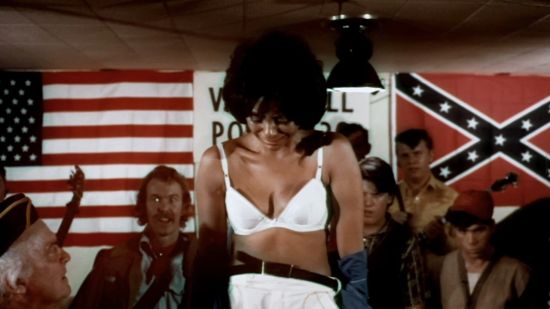
You may have noticed by now that all the people featured on this list are white women. That’s intentional. White womanhood is foundational Grande Dame Guignol, hagsploitation and psycho-biddy. Their films concern the fear of and for white women. In the Grande Dame Guignol, whiteness is one of the most fundamental strings she pulls to get her way.
That racism is on ruckus-filled display in Poor Pretty Eddie, once again starring Shelley. In this awkwardly complex rape-revenge thriller, she plays Bertha, a dried-out starlet soaking herself in booze and sex with her pet man and Elvis impersonator, Eddie. But after Eddie attacks the stranded Liz Wetherly (Leslie Uggams, a saint for completing this picture), Bertha becomes inflamed with jealousy.
And Winters sure has a way of delivering her racist lines with a cruelty that is uncomfortably real. Bertha demonstrates all the ways scared and abandoned white women will side with awful white men to protect their property and sense of security. She shows that racism is a form of control, a grotesque reality that can be counted on and twisted. We feel this horror solely because of the honesty in Winters’ performance. Sure, Bertha’s rages and love for feather boas let Winters go full-throttle camp and yell things like “she farts Chanel No.5,” but she’s always genuine. Shock and awe come when this great dame does what she does best and drops the curtain, revealing a shattered woman whose life has been totally shot through.
The Mirror Crack’d (1980)
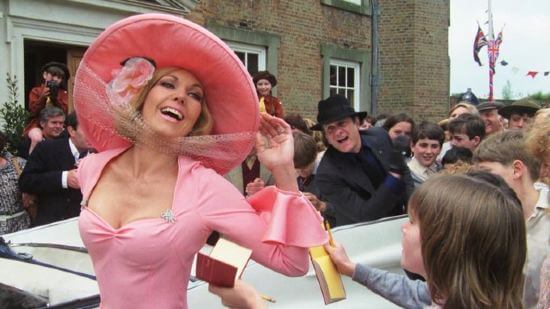
Grande Dames are experts at the levers and pulleys of performance. They come with many tricks, but my favorite is the curtain drop. Suddenly, we see an actress who has been playing in an entirely different depth of field. In these flashes, we glimpse her profound psychology.
Taylor returns to our list again to give a masterclass in dropping the curtain as the mysterious film star Marina Gregg in Agatha Christie’s The Mirror Crack’d. She stars alongside a crown of jeweled stars, including Rock Hudson, Tony Curtis, Kim Novak (herself giving a deliciously reptilian performance) and the late, great Dame Angela Lansbury in her only turn as Miss Marple. As the investigation into the murder of a woman from the village starts to heat up, eyes turn to Marina.
That’s when Miss Marple’s nephew Dermot (Edward Fox), an inspector and Marina Gregg fan, arrives to interview her. During the questioning, Marina gets agitated. Taylor’s body starts to turn red. Her breath quickens, pitch heightens. And then bang. Dermot completes her sentence. She’s been reciting a monologue from one of her movies. Marina collapses in mischievous laughter like a child caught eating a cookie before dinner. Taylor as Marina is a fine example of the Grande Dame Guignol operating alone outside her usual genre. And Dermot reminds us how important we are as fans and audiences to the building and maintaining the Grande Dame ethos.
The Fan (1981)
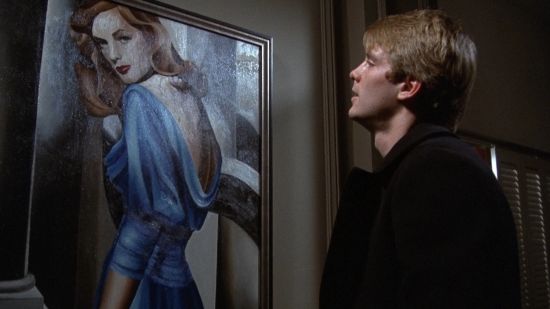
As the postmodern age rounded into the Reagan ‘80s, the relationship between us and the Grande Dame became fraught. No longer the adoring but distant public, her audience became obsessive fanatics invading her privacy. Thus we get something like The Fan, in which Her Ladyship Lauren Bacall is Sally Ross, an aging film star who is being harassed as she makes her first go at Broadway (with sequined numbers by Marvin Hamlisch and Tim Rice, no less!). Bacall’s turn is fun not just because she brings the same unwavering sense of conviction to all her performances, but also because Sally is a maturation of her early noir roles. No longer the purring femme fatale, Sally has been trampled by fame and divorce; she’s world-weary and wiser. But Sally isn’t hardened at all. Age brings her a contented frankness perfectly suited to Bacall’s settled brassy timbre. Is the singing ideally suited? Well, never mind.
Marlene (1984)
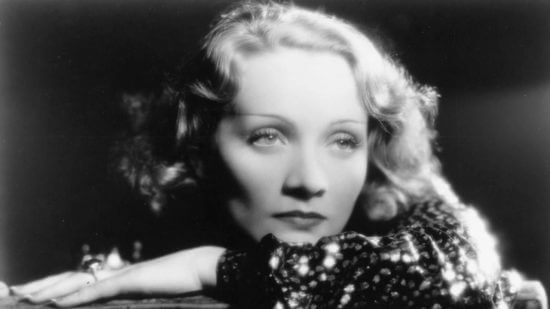
For some, the paranoia about the public was very real. In this enigmatic documentary about her life, screen titan Marlene Dietrich refuses to show herself. Only providing commentary via recorded interviews with director and Judgment at Nuremberg co-star, Maximilian Schell, Dietrich is actively trying to control her public image before she dies. She wants her lasting impression to be one of ageless global beauty—certainly not one of kitsch. (Hearing Madame Marlene disavow kitsch is still one of the most heartbreaking moments in documentary filmmaking.) But unlike most other Grande Dame Guignol films, there is no curtain drop here, no exposing of tricks. All we’re privy to is the phantasmagoria that Marlene projects for us. We never see the woman controlling the spectacle. In some ways, denying the usual confrontation of mortality and aging makes Marlene Dietrich feel immortal.
-

-

-

-

-

-

-

-

-

-

-

-

-

-

-

-

-

-

-

-

-

-

-

-

-

-

-

-

-

-

-

-

-

-

-

-

-

-

-

-

